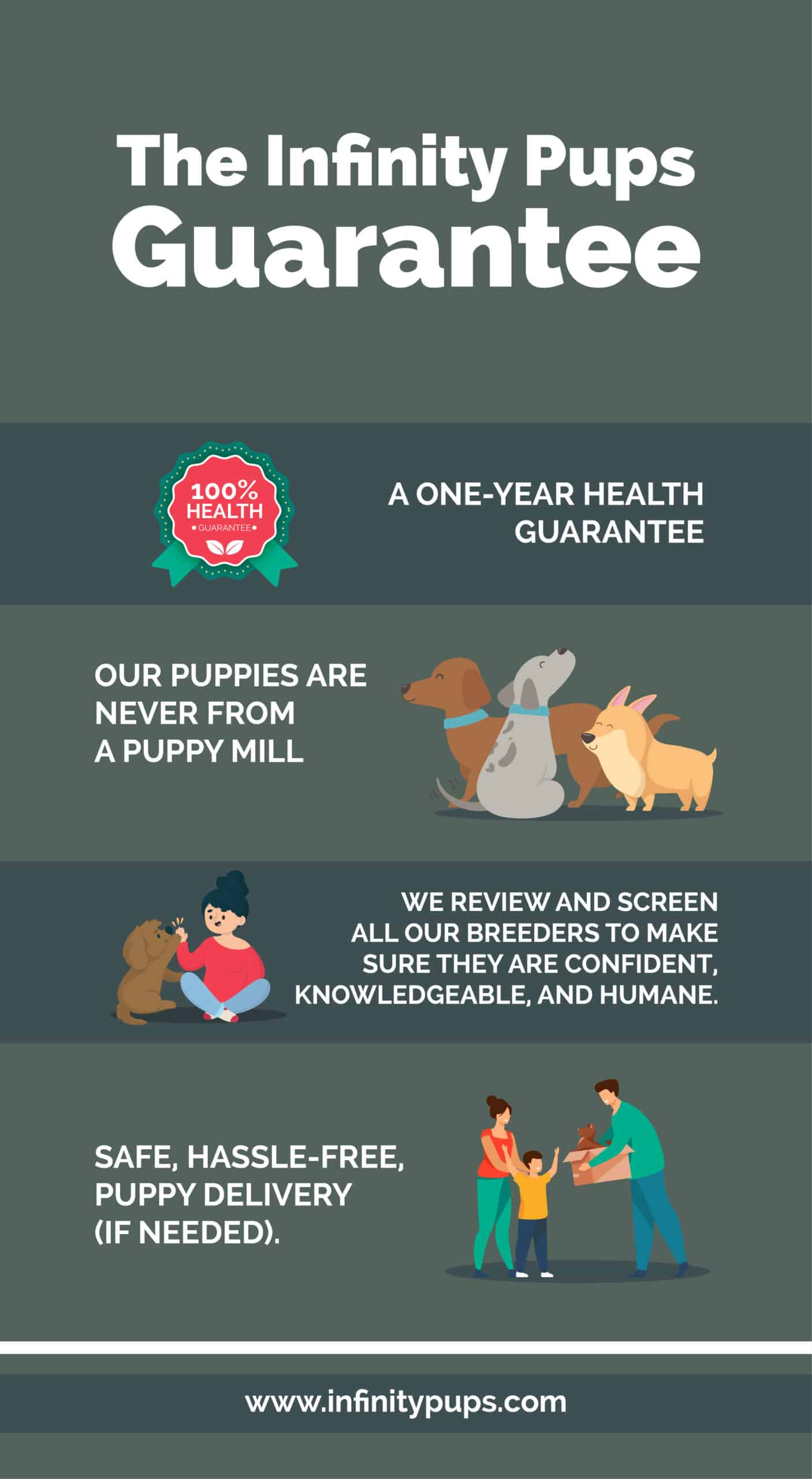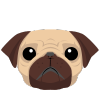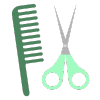Have you fallen in love with the adorable, quirky pug, with its friendly personality and wee little squished-in face?
If having a pug appeals to you, but you aren’t sure if it’s a practical pet choice, keep reading!
At Infinity Pups, we sell a variety of health-guaranteed puppies, including pugs, from reputable, ethical breeders. We love to match adorable puppies with their forever families.
In fact, that’s why we wrote this article—to help you figure out if a pug is the right furry friend for you!
Let’s begin!
History of the Pug
Pugs originated over 2000 years ago in ancient China. Loved for their small size and friendly personality, pugs were the favored pets of emperors and high-ranking officials.
In the middle ages, trade routes between China and Europe became increasingly important as Europeans hungered for foreign spices and luxurious silk. But over time, Europeans began importing other things from China, including pugs! Pugs first came to Europe in the 16th century and were popular with European royalty.
Although pugs have been more popular at some points in history than others, they continue to be popular to this day. However, if you compare ancient paintings of royal pugs with today's pugs, you might notice that they look a little different. After centuries of breeding, the pug’s nose has gotten shorter!
In 1885, the American Kennel Club (AKC) officially recognized the pug as a breed. Today, pugs are well-liked for their small size and quirky, affectionate nature.
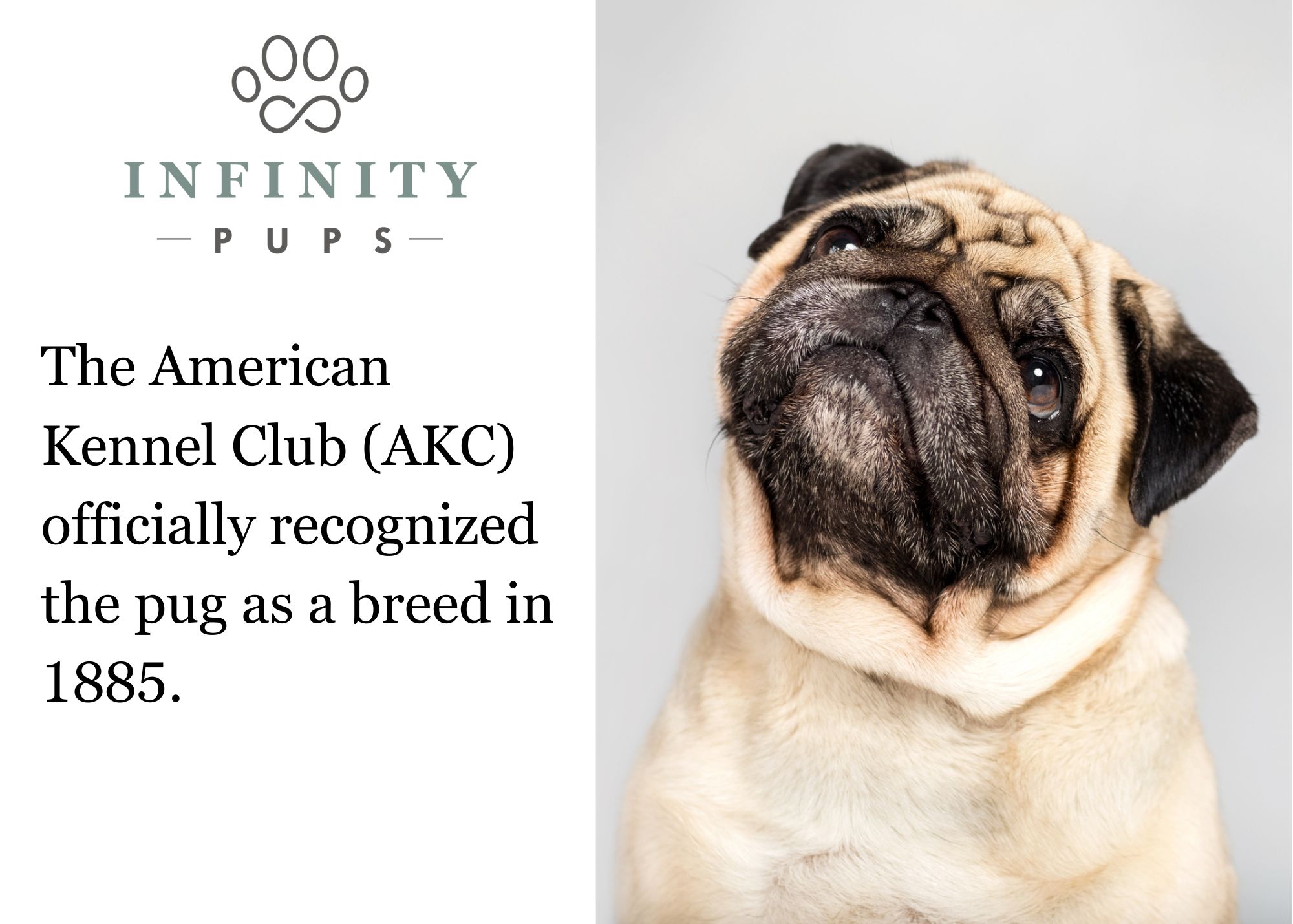
Exploring a Pug’s Temperament
If you have a sense of humor and want a fun, comical dog, pugs might be for you.
Pugs have large, round, expressive eyes and facial wrinkles around their forehead and nose. These features allow them to express comical, almost human-like expressions. For example, your pug may look inquisitive, happy, sad, worried, or annoyed.
Pugs are generally friendly, affectionate, and charming. They form strong bonds with humans and love to clown around and be silly.
Pugs are very social and love to be around people and other pets. They are not typically aggressive or overly territorial, so they’re a great choice if you have children or other pets!
Pugs may have a stubborn streak but generally want to please their owners, so they’re not too difficult to train. Remember, patience and positive reinforcement are key! With consistent training and gentle guidance, pugs can learn to follow commands.
Overall, pugs are loving, affectionate animals who thrive in environments with plenty of love and attention.
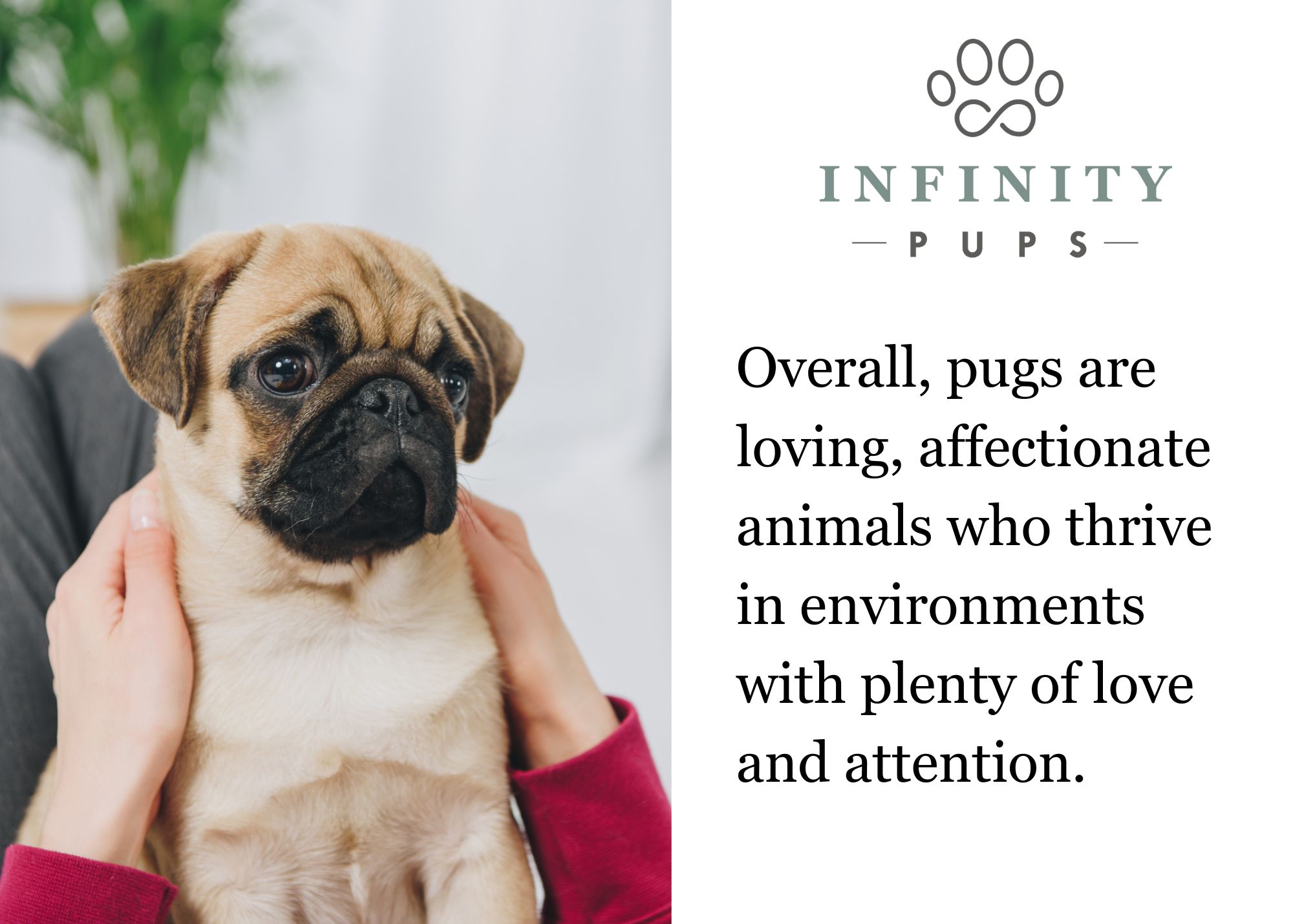
Nine Health Considerations to Be Aware Of
Unfortunately, pugs are genetically predisposed to a few specific health problems. By being aware of these potential issues, you can take proactive measures to ensure your pug's well-being!
Let’s take a look.
- Brachycephalic Airway Syndrome (BAS): That adorable squished-in face has a downside: it means pugs have short skulls and compressed airways that may cause breathing difficulties. Be on the lookout for loud snoring, heavy panting, and difficulty breathing. BAS is often worse in hot and humid weather, so keep your pug cool.
- Obesity: Pugs love to eat! Unfortunately, weight gain can exacerbate their breathing problems and strain their joints. Prevent obesity by monitoring your pet’s diet and providing regular exercise.
- Eye Problems: Sadly, your pugs' large, adorable eyes are susceptible to corneal ulcers, dry eye, and entropion (inward rolling of the eyelids). Ask your vet to check your pug’s eyes for these issues regularly.
- Skin Fold Infections: Those expressive skin folds around your pug's face can trap moisture and debris, leading to skin fold dermatitis or infections. You can help prevent skin issues by keeping these wrinkles clean and dry.
- Hip Dysplasia: Pugs, like many other dog breeds, can be prone to hip dysplasia, a condition where the hip joint doesn't develop properly, leading to discomfort and mobility problems. Regular exercise and maintaining a healthy weight can help reduce the risk of hip dysplasia.
- Luxating Patella: This is a condition where the kneecap dislocates from its normal position, causing pain and lameness. Regular vet check-ups can help identify any knee issues.
- Heat Sensitivity: Unfortunately, your pup’s cute little nose can keep them from properly regulating her body temperature, potentially leading to heatstroke. Keep your pug cool and away from hot weather as much as possible!
- Dental Problems: Pugs are prone to dental issues, such as periodontal disease, so brush your dog’s teeth two to three times per week. You may also need to get your pug’s teeth professionally cleaned periodically.
- Allergies: Some pugs may develop allergies to certain foods or environmental factors. Watch for signs of itching, skin irritation, or digestive issues, and consult with your veterinarian if you suspect allergies.
Overall, it’s essential to keep on top of your pug’s health by providing him with a balanced diet, regular exercise, good grooming, and regular visits to the vet.
And while a list like this may seem overwhelming at first, it's important to remember that every dog will have health issues if they aren’t taken care of properly. The most important thing is to find a good vet and follow best practices in taking care of your pug.
For more information on keeping your pup healthy, check out these related blogs:
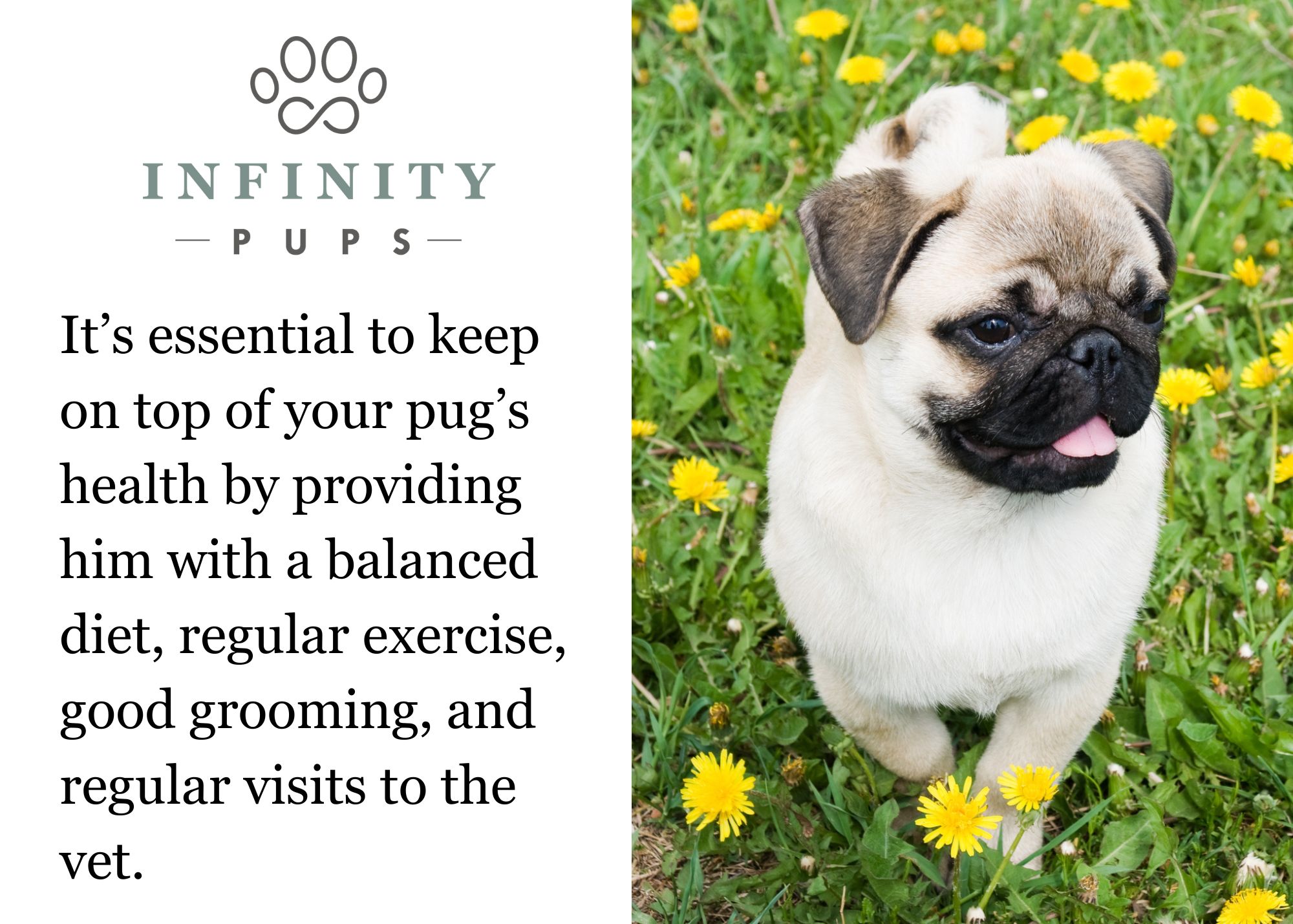
Grooming and Care Requirements of Pugs
Pugs have specific grooming needs and care requirements to keep them happy and healthy.
Let’s go over the most important things to keep in mind.
Brushing
Pugs require regular brushing to spread their natural oils throughout their coat and to control shedding.
Cleaning
Don’t over-bathe your pug, as it will strip her coat of natural oils. Instead, only give her a full bath when she is visibly dirty or has an odor. Use a mild dog shampoo and dry her thoroughly afterward.
Make sure to clean your dog’s ears and the wrinkles on their face regularly. The wrinkles can collect moisture and dirt, so wipe them with a soft, damp cloth. Use a damp cotton ball or a vet-recommended ear cleaner to wipe the wax from their ears and prevent buildup.
If you see debris buildup in your pug’s eyes, remove it with a damp cloth.
Nail Trimming
If your pug’s nails grow too long, they can cause your pup discomfort and difficulty walking. Regularly trim your pup’s nails, but don’t cut too close to the quick, as it can cause bleeding. (If you want more information on how to trim your dog’s nails correctly, you can watch this handy tutorial.)
Dental Care
As we mentioned earlier, pugs are prone to dental problems, so brush your pug’s teeth regularly with a dog-specific toothbrush and toothpaste. Dental chews or toys can also help keep their teeth clean.
Diet and Nutrition
Prevent obesity in your pug by providing a balanced and high-quality diet and being careful not to over-feed. Even though it’s tempting to pamper your dog with table scraps, make sure to do this with caution (some foods are dangerous) and extreme moderation.
Exercise
Pugs are not overly-active dogs, but they need regular walks, playtime, and mental stimulation to keep them healthy.
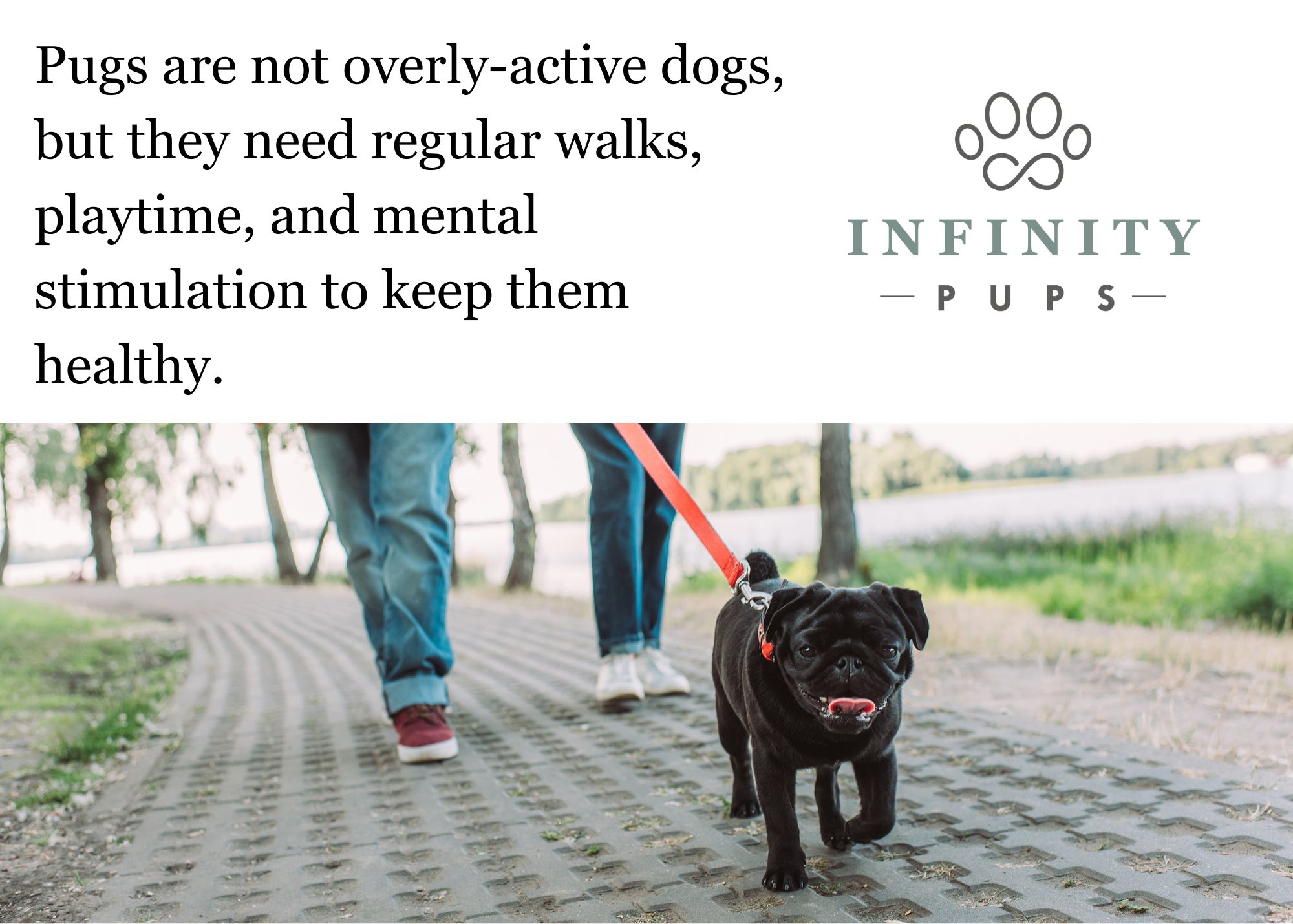
Training
Early on, be sure to socialize and train your pug properly. They may be stubborn, but with patience and positive reinforcement, you can teach them to use a leash and obey basic commands.
Brachycephalic Considerations
Remember, pugs are brachycephalic dogs, meaning they have short skulls and compressed airways. Because of this, pugs sometimes have difficulty breathing, especially in hot weather. Help them out by:
- Avoiding intense exercise on hot days
- Providing a cool and shaded environment for them
- Being cautious during travel, as they can have difficulty breathing in the cargo holds of airplanes or in cramped spaces
Anal gland expression
Your pug’s anal glands should naturally empty when he has a bowel movement. If they don’t, his glands must be manually expressed to prevent infection and discomfort.
If your pug has a fishy odor, is dragging his rear on the ground, or is excessively licking his rear, he probably has an anal gland issue. You can express the glands yourself, but if you want to avoid the smelly, messy job, you can also ask your vet to do the deed.
Vet checkups
Finally, it’s essential to take your dog to the vet for regular checkups! While this is true for all dogs, pugs are predisposed to some health issues you’ll want to keep on top of.
How Infinity Pups Can Help
Now that you understand the adorable temperament as well as the health and care needs of pugs, are you ready to take home a new furry friend?
We’d love to help you out! Feel free to browse our pug puppies for sale at Infinity Pups.
All our puppies come from reputable breeders we’ve personally vetted—never from puppy mills. We also offer a health guarantee so you can rest assured that you’re getting a healthy, well-cared-for pup.
Besides pugs, we also offer a large variety of puppy breeds, including other toy breeds such as:
If you have any questions, you can read our FAQ or contact us personally.
We’d love to help!
